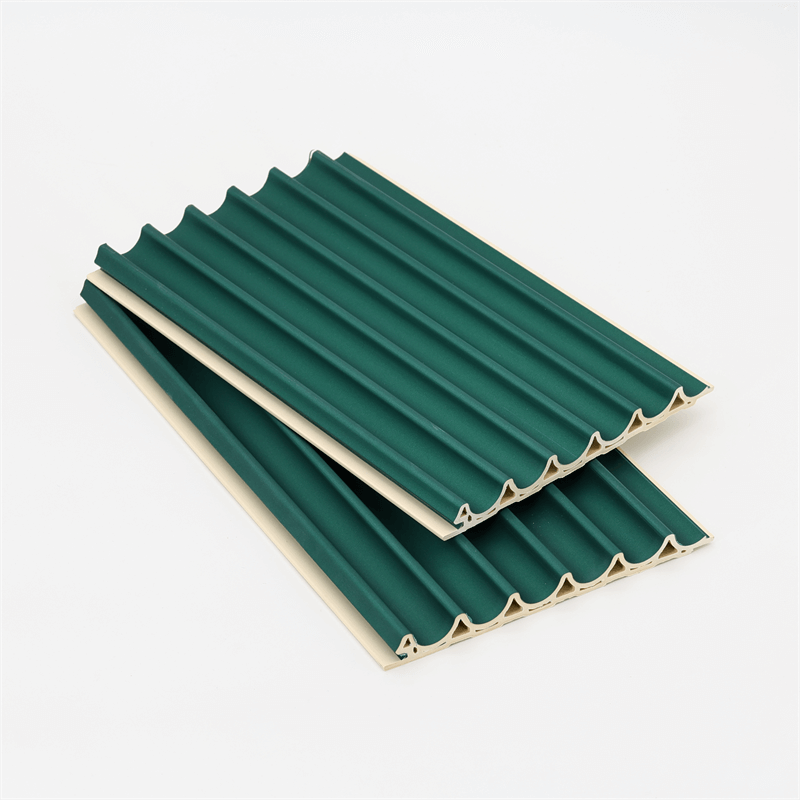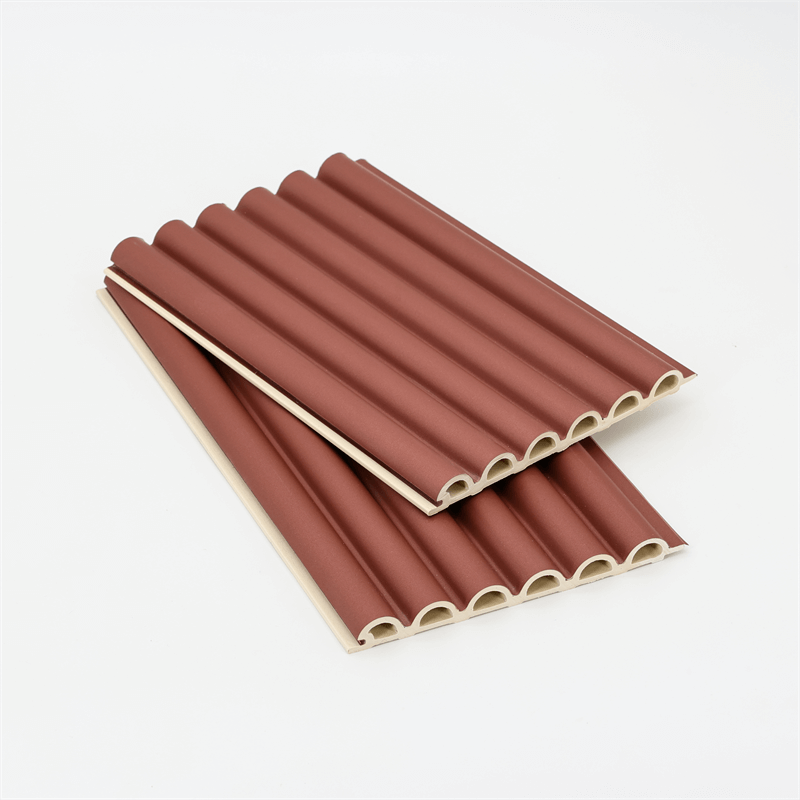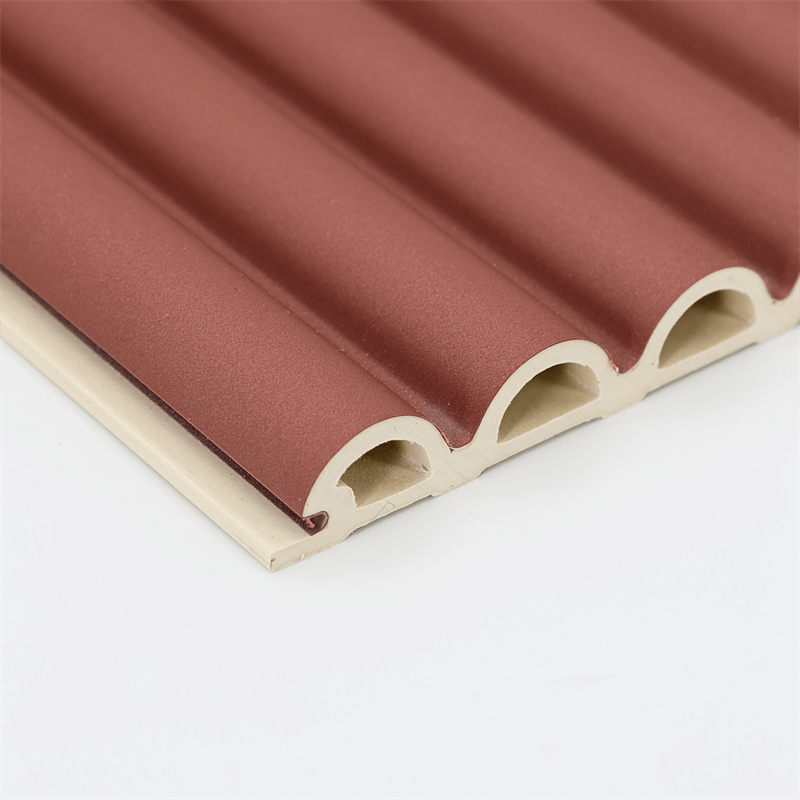In the realm of green building design, architects and builders are continuously seeking sustainable and environmentally friendly materials that can enhance both the aesthetic appeal and performance of structures.
Wood-Plastic Composite (WPC) wall panels have emerged as a promising solution in this regard.
By combining recycled wood fibers and plastic, WPC panels offer a sustainable alternative to traditional wall cladding materials.
This essay explores the use of WPC wall panels as a sustainable solution for green building design, highlighting their benefits and implications for environmentally conscious construction.
I. Environmental Benefits of WPC Wall Panels:
WPC wall panels are renowned for their eco-friendly characteristics.
They are composed of a blend of recycled wood fibers, often sourced from post-industrial or post-consumer waste, and recycled plastic, usually derived from discarded plastic bottles or other plastic waste.
By utilizing these recycled materials, WPC panels help reduce the demand for virgin timber and plastic, thereby conserving natural resources and mitigating deforestation and plastic pollution.
Furthermore, the production of WPC panels requires less energy compared to conventional wall cladding materials like concrete or ceramic tiles.
This reduced energy consumption during manufacturing contributes to lower carbon emissions and helps combat climate change.
Moreover, WPC wall panels are recyclable at the end of their lifespan, ensuring that they can be repurposed rather than ending up in landfills.
This closed-loop approach to material use minimizes waste generation and contributes to a more circular economy.
II. Energy Efficiency and Thermal Performance:
Green building design emphasizes energy efficiency and reducing the environmental impact associated with heating and cooling systems.
WPC wall panels offer excellent thermal performance, which can significantly contribute to the energy efficiency of buildings.
The combination of wood fibers and plastic in WPC panels provides natural insulation properties.
This insulation helps regulate indoor temperatures by minimizing heat transfer through walls.
As a result, buildings incorporating WPC panels can reduce their reliance on artificial heating and cooling systems, leading to energy savings and lower carbon emissions.
Furthermore, the thermal efficiency of WPC panels contributes to improved occupant comfort by maintaining a more stable indoor environment.
Reduced temperature fluctuations enhance the overall experience for occupants, particularly in regions with extreme climates.
III. Water and Moisture Resistance:
Water intrusion and moisture-related damage are common challenges in building construction, often leading to structural issues and mold growth.
WPC wall panels offer inherent water resistance, making them an ideal choice for green building design.
Unlike natural wood, which can rot or warp when exposed to moisture, WPC panels are highly resistant to water damage.
This quality ensures their longevity and reduces the need for frequent repairs or replacements, ultimately reducing the environmental impact associated with building maintenance.
Additionally, the water resistance of WPC panels minimizes the risk of mold and mildew growth.
These fungi not only deteriorate the indoor air quality but also contribute to health issues for occupants.
By choosing WPC wall panels, architects and builders can create healthier and more sustainable indoor environments.
IV. Durability and Longevity:
Sustainability in building design encompasses not only environmental considerations but also the durability and longevity of materials.
WPC wall panels excel in this aspect, offering a long lifespan and reduced maintenance requirements.
The combination of wood fibers and plastic in WPC panels results in a material that is resistant to rot, decay, and insect damage.
Unlike natural wood, WPC does not require regular painting, staining, or sealing, significantly reducing the need for chemical treatments and maintenance efforts.
The durability of WPC panels translates into reduced material waste and lower life-cycle costs for buildings.
By choosing a long-lasting material like WPC, architects and builders can contribute to the longevity of structures while minimizing the environmental impact associated with frequent renovations or replacements.
WPC wall panels present a sustainable and environmentally friendly solution for green building design.
Their use of recycled wood fibers and plastic contributes to resource conservation and waste reduction.
Additionally, WPC panels offer energy efficiency through their thermal performance, reducing the reliance on heating and cooling systems.
Their water resistance properties enhance durability, mitigate moisture-related issues, and promote healthier indoor environments.
Lastly, the longevity of WPC panels reduces maintenance requirements, lowering the overall environmental impact throughout the life cycle of a building.
By incorporating WPC wall panels into green building design, architects and builders can achieve both sustainable construction practices and aesthetically pleasing spaces.
The use of WPC panels not only aligns with environmental goals but also supports the creation of healthy, durable, and energy-efficient structures.
As the demand for sustainable building materials continues to rise, WPC wall panels are poised to play a significant role in shaping the future of green building design.

In conclusion, the utilization of Wood-Plastic Composite (WPC) wall panels in green building design offers a sustainable solution with numerous environmental benefits.
By incorporating recycled wood fibers and plastic, WPC panels contribute to the conservation of natural resources and reduction of waste.
Their energy-efficient properties and thermal performance enhance the energy efficiency of buildings, reducing carbon emissions and promoting occupant comfort.
The water and moisture resistance of WPC panels mitigate structural damage and mold growth, ensuring healthier indoor environments.
Furthermore, their durability and longevity reduce maintenance requirements and minimize the environmental impact associated with building renovations and replacements.
The adoption of WPC wall panels in green building design aligns with the principles of sustainability, providing architects and builders with an eco-friendly material option that combines aesthetic appeal with environmental responsibility.
By choosing WPC, professionals in the construction industry can contribute to a more sustainable future, creating buildings that are both visually striking and environmentally conscious.
As the demand for sustainable construction practices continues to grow, WPC wall panels are poised to become an integral part of green building design.
Their versatility, durability, and environmental benefits make them a compelling choice for architects, builders, and stakeholders who prioritize sustainability and seek to create spaces that are both beautiful and environmentally responsible.
In conclusion, WPC wall panels offer a sustainable solution for green building design, combining recycled materials, energy efficiency, water resistance, and durability.
By integrating WPC panels into their designs, architects and builders can contribute to resource conservation, energy efficiency, and healthier indoor environments.
As the construction industry increasingly emphasizes sustainability, WPC wall panels are positioned to play a significant role in shaping the future of green building design, where environmental responsibility and aesthetic excellence go hand in hand.


